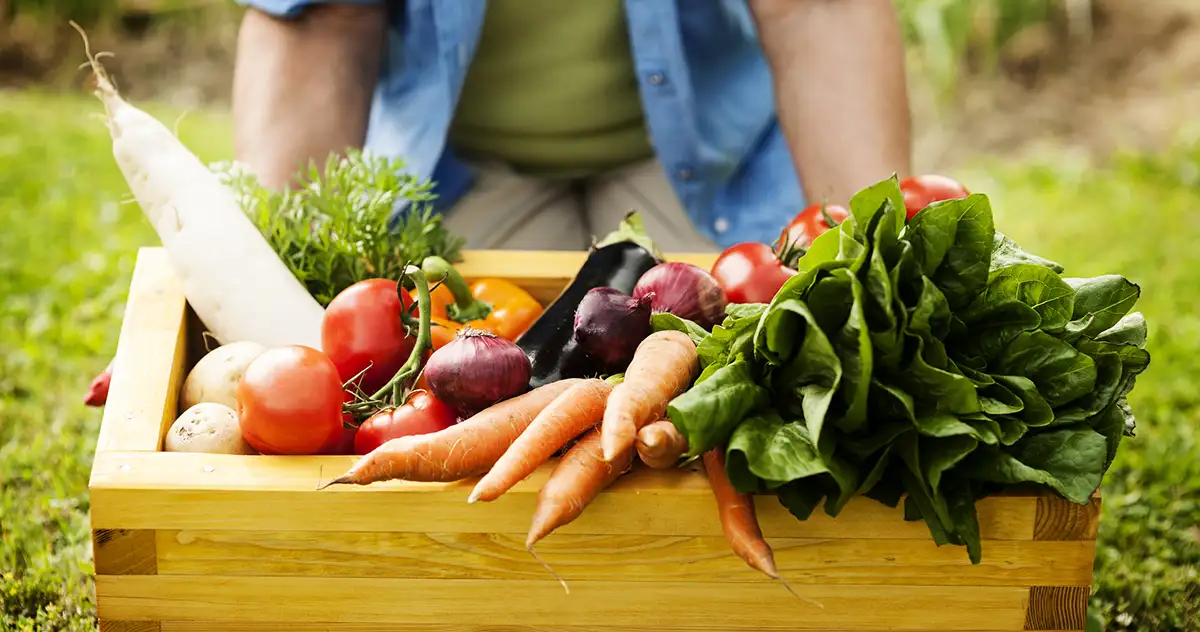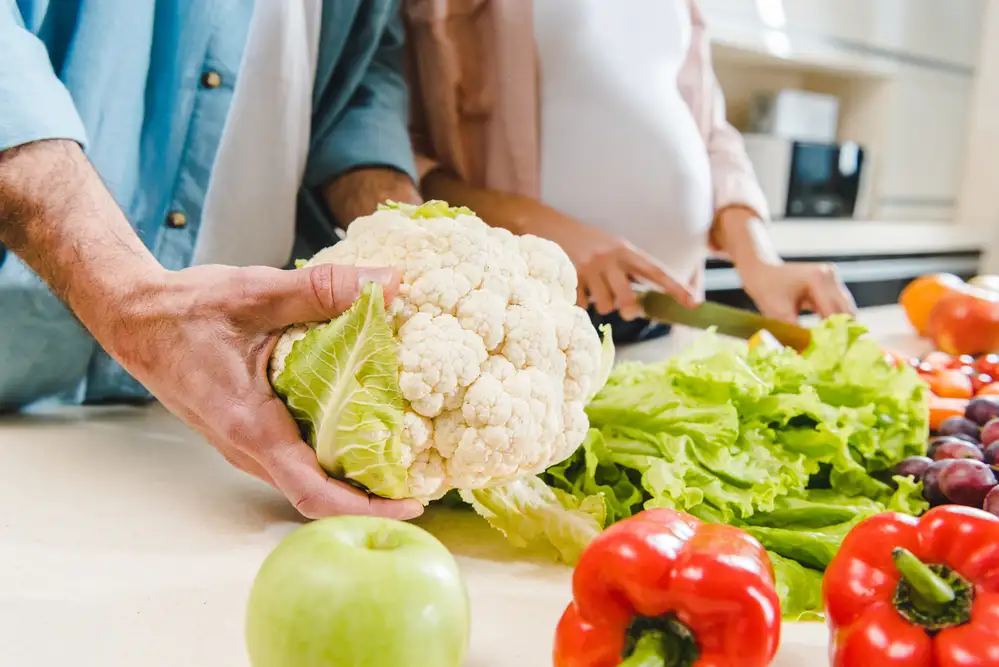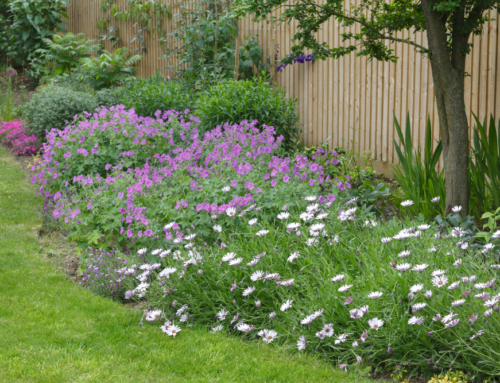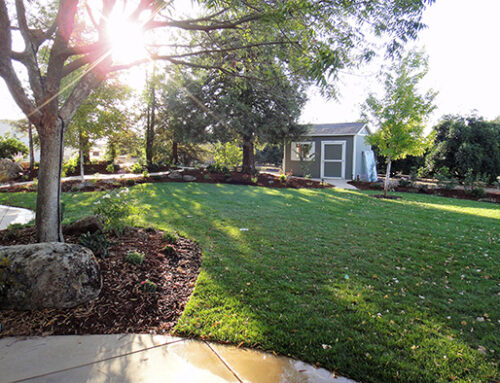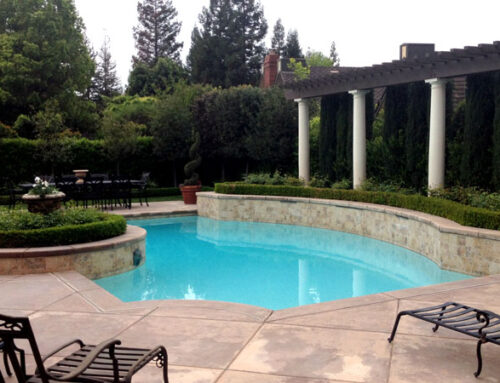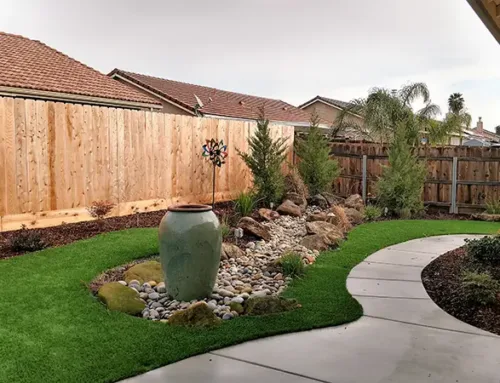Fresno is in the heart of the Central Valley, an agricultural hub for all of California. If you want to start your own vegetable garden, you might wonder, what are the best veggies to grow in Fresno? When should I start planting them? We’re here to help!
What to Know Before Starting Your Garden
There are a few things that are important to make note of before starting your vegetable garden in Fresno. The first is that Fresno is in Zone 9 in California. This means that spring’s last frost date is around February 28th and the first frost date in fall is around November 17th. This is important information to know when deciding which veggies to plant and for helping you determine when to plant them during the year. You should also be aware that there are some vegetables you’ll first want to start in indoor planters to sprout before moving them to your outdoor garden. This gives you a few extra weeks for planting, which can make a huge difference.
Here are the best veggies to grow in your Fresno garden:
Artichokes
Artichokes are a delicious addition to your garden. They are easy to grow and can be started indoors in a deep container as early as January 3rd. You can move them outside after the first frost (around February 28th), and they’ll be ready to harvest in about 80 to 100 days (or roughly late July/early August).
Beans
Beans can be planted directly into your garden a week after the first spring frost. Bush beans will need to be planted two inches apart while pole or trellis beans will need to be planted three inches apart. They’re usually ready to harvest about 65 days after planting.
Beets
Beets are a great garden addition because not only are they delicious, but they can also be used for things like natural dyes, natural makeup, and even as a pre-workout. They can be started indoors in January, and they can be moved to your garden after the first frost in February. Your beets should be ready to harvest about 50 to 70 days after planting.
Broccoli
Broccoli should be planted at least three months before the first fall frost in late November. They can then be moved outdoors when they are about 4-6 weeks old. Broccoli should be planted about 20 inches apart and about 39 inches between rows to ensure that there is plenty of growing space for the plants. You can tell your broccoli is ready when the head of your crop is still tightly closed, but begin to loosen around the edges.
Brussels Sprouts
Brussels sprouts should be planted up to four weeks before the last spring frost so you can harvest them in the fall. Brussels sprouts should be planted about 2 feet apart in rows that are about 3 feet apart. If you want sweeter sprouts, wait until after the first fall frost to harvest them (around November 11th). Brussels sprouts can be harvested when their buds are about 1-2 inches in diameter and are green. You only need to harvest what you need since sprouts can be left on the stem throughout the first part of winter.
Cabbage
If you’re looking for something easy to grow, cabbage is a great crop to choose. They can be started indoors 4 weeks before the last frost in February or 6 to 8 weeks before the first frost. Cabbage should be planted about 15 to 18 inches apart. If you plant a few varieties of cabbage, you can harvest cabbage all season long. You’ll know your cabbage is ready when the base of the head is around 4 to 6 inches across. Similarly to brussels sprouts, you can leave the stem intact to grow a second head of cabbage that you can harvest later.
Carrots
Carrots should be planted 3 to 4 inches apart in rows that are about a foot apart. The seeds should be planted about a quarter inch deep, and they should be planted 3 to 5 weeks before the last frost in late February. Carrots are ready about 2 1/2 months after planting.
Cauliflower
Cauliflower is in the same family as broccoli and cabbage, which means it’s best to harvest in the fall. This means that you should plant the seeds indoors at least four weeks before the first frost, then move them outdoors two weeks before the last frost. When moving them outdoors, plant them at least 18 inches apart in rows 30 inches apart. When the cauliflower head reaches about 6 to 8 inches in diameter, it’s ready to harvest.
Celery
Celery is a more difficult crop to plant since celery seeds are so small. It should be started indoors 8 to 10 weeks before the last frost, and then replanted outside when temperatures are consistently around 50 degrees. It should be planted 1 foot apart in rows that are 2 to 2 1/2 feet apart. Celery can take up to 140 days to grow before it’s ready to be harvested. When the lower stalks are around 6 inches tall, they can be harvested. However, you should wait until the upper stalks are around 18 inches tall with a diameter of three inches before harvesting.
Chard
Chard, especially Swiss chard, does well both in a garden or in a pot. Seeds can be planted during the end of the last frost, and can be started indoors. They should be moved outdoor when nighttime temperatures are above 28 degrees. Seeds should be planted 1/2 inch deep, about an inch apart, and the rows should be at least 3 feet apart. It’s often ready only 4 to 6 weeks after planting, and you can harvest the leaves for months after your first harvest. You’ll know it’s ready to harvest when the plant is about 9 inches tall, although you can also use the more tender baby leaves.
Collard Greens
Collards are the perfect winter crop if you’re looking for something you can harvest in the winter. They can be started indoors in late July and moved outside in late August. They should be planted around 18 inches apart in rows that are at least 3 feet apart. Collards should be ready in about 75 days. You can cut them to ground level when the plant reaches to about 6 to 10 inches in height, or you can pick the leaves when they reach your preferred size.
Corn
Corn should be planted outside at least two weeks after the last spring frost. If you plant sweet corn, you have to make sure the soil is at least 55 degrees before planting. Instead of planting corn in rows, it grows better in square plots since it is pollinated by wind. Once your corn’s tassels are brown and the cobs start to swell, you’ll know it’s ready to harvest, approximately 20 days after the silks appear.
Cucumbers
Cucumbers can be started inside and moved outdoors two weeks after the last spring frost. Move your seeds outside after they are 3 weeks old and plant them 6 inches apart in rows that are at least 6 feet apart since they can take up a lot of space. Your cucumbers are ready to harvest when they are large enough in size. You should be able to harvest anywhere from 10-20 cucumbers from one plant.
Eggplant
Eggplants are started indoors up to 10 weeks before the last frost date. Seeds should be planted about a 1/4 inch deep, 24 inches apart, and 2 to 3 feet apart. They can be harvested about 70 days after planting. You’ll be able to tell that they’re ready when the skin is shiny and thin.
Gourds
Gourds are planted directly into your garden after the last spring frost. After moving them outside, they need to be planted 5 inches apart in rows that are 5 to 10 feet apart. They are ready to be harvested 90 to 130 days after planting depending on which kind you grow, and the harder shell gourds take a bit longer to mature. They’re often ready after the first fall frost.
Kale
Kale is planted outside two weeks before the last frost in spring. Seeds should be planted a 1/4 inch deep, 3 inches apart, and in rows 18 inches apart. It can be harvested in about 90 days when it reaches its full size or when the leaves are small and tender. You’ll know it’s ready when the leaves are about the size of your hand.
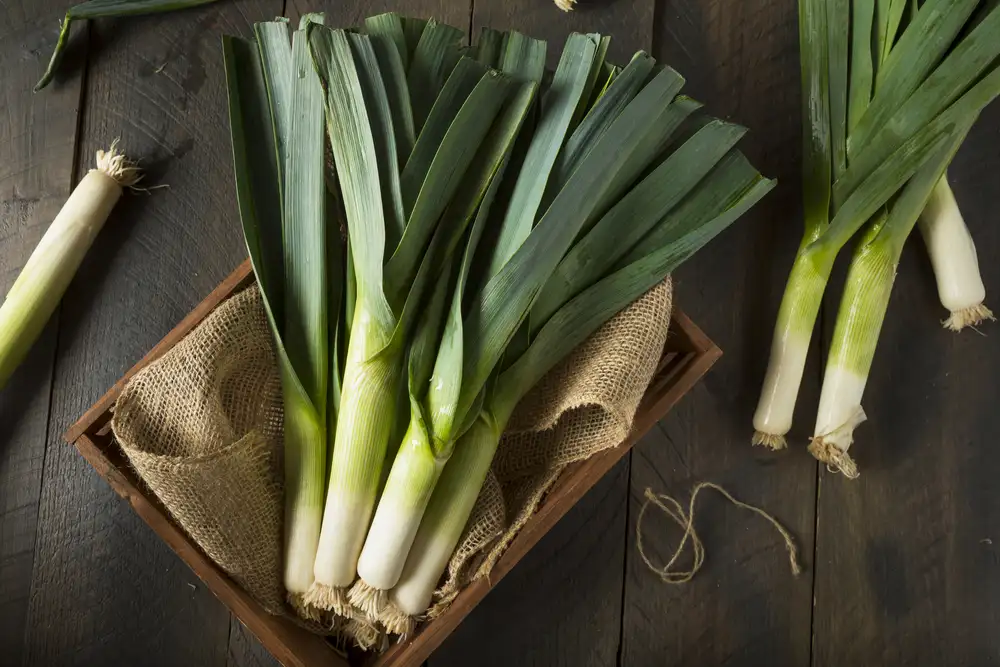 Leeks
Leeks
Leeks are a very easy crop to grow, and they can be started inside up to 10 weeks before the last frost. When you move them outside, plant them 4 to 8 inches deep, 4 to 6 inches apart, and in rows 20 inches apart. They’re ready to harvest in late summer or early fall. Make sure that when you harvest your leeks, you harvest the entire plant.
Lettuce
Lettuce grows very quickly and can handle a little bit of frost. You should plant lettuce directly into your garden at staggered intervals. You’ll want to plant them 4 inches apart for leaf lettuce, 8 inches apart for loose-headed lettuce, and 16 inches apart for firm-headed lettuce. It can be harvested whenever you see real leaves formed on the plant. You’ll want to pick it when the leaves are younger, otherwise, it may be bitter.
Okra
Planting okra is a bit different than other veggies on this list. Before you plant the seeds, you want to soak the seeds in water for at least 12 to 18 hours to soften the outer shell of the seed. Okra is planted mid-March to ensure that the spring frost has completely passed. Make sure to plant seeds 1 inch deep in rows 3 feet apart. You also want to make sure to be mindful about where you plant your okra since you don’t want the shade of a mature plant (which can grow up to 6 feet tall) to affect your other crops. Okra produces crops for 10 to 12 weeks and is ready about 2 months after planting it. Harvest it regularly to avoid the pods from becoming too tough, and wear gloves to prevent injury from okra’s spiny exterior.
Onions
Onions must be started at least two months before the last frost since they take a very long time to grow. Plant them 1/4 inch deep and add plastic to the top of the planter to keep in any moisture. Transplant them at least 4 inches apart when they are about the size of a pencil. You can harvest onions early as green onions, or when the tops have flopped over for a fully developed onion. You don’t want to harvest them until a dry day to completely harvest them.
Peas
Peas are planted outdoors 4 to 6 weeks before the last frost in spring. Some varieties of peas will require a pole or a trellis to grow against. They can often be harvested 12 to 15 weeks after planting. You’ll also want to rotate your pea crop every year and continuously pick the pods to encourage growth.
Peppers
You can begin your peppers up to 8 weeks before the last frost date, or up to 12 weeks before for hot peppers. Plant your peppers a 1/4 inch deep by putting the seed on top of the soil and then poking it into the soil. Space your seeds about 12 to 18 inches apart. Once the peppers begin to appear on the plant, you may need to offer extra support with a tomato cage since the peppers can weigh the plant down.
Pumpkins
Like other gourds, pumpkins prefer warm weather. Pumpkins can be planted into rows 6 to 12 inches apart with plenty of space to grow all around. Pumpkins are ready to harvest when they reach a rich orange color (but sometimes come in other colors as well), and when the rind is still hard, but the inside sounds hollow when you tap on it.
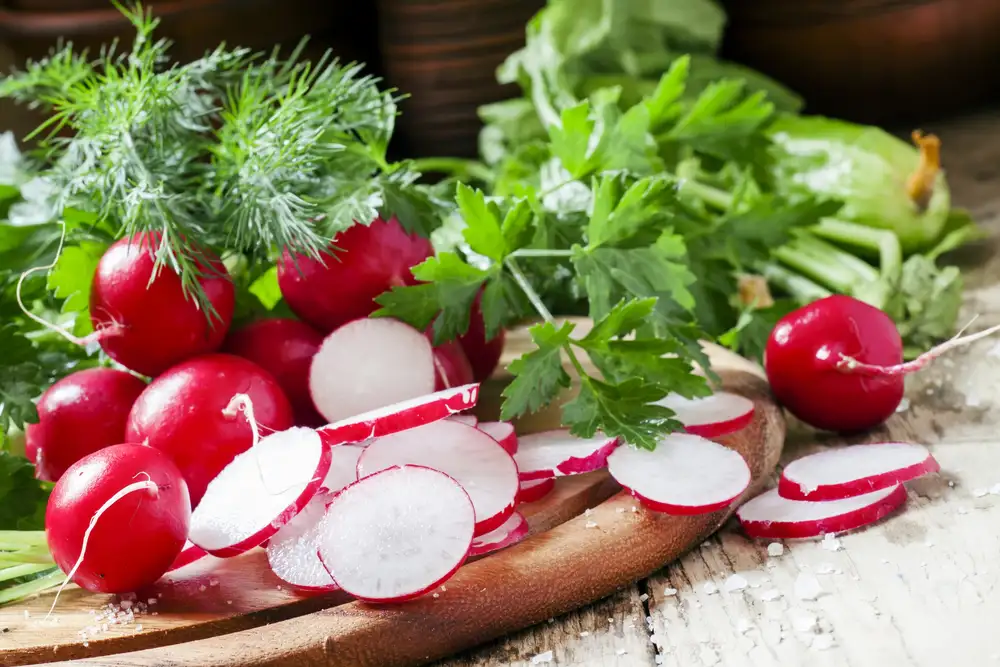 Radishes
Radishes
Radishes must be planted directly into your garden in the spring or fall. Radishes are ready to harvest when the leaves are at least 4 inches tall. The roots for red radishes should be at least 1 inch in diameter, and white radish roots should be at least 3/4 inches in diameter.
Spinach
Spinach should be planted 4 to 6 weeks before the last frost. Make sure to leave at least 2 inches between each crop. Spinach can be harvested when the leaves reach your preferred size, although you should remove the outer leaves first to delay bolting. It’s possible for spinach to sprout again in spring if you cover the plant in hay during the winter.
Squash
Squash is planted in mounds with 3 to 5 seeds per mound. Squash mounds should be about 4 feet apart after the frost has passed. Squash can also be started inside 4 weeks before the last frost date, and they can also be grown in buckets or pots. Squash are ready to harvest when they reach about 6 to 8 inches long, or summer varieties can be harvested slightly before.
Tomatoes
One of the most common plants grown in a garden, tomatoes are one of the easiest crops to grow. They can be planted indoors 6 to 8 weeks before the last frost date. They must be kept near a heat source until the sprouts begin to appear. Tomatoes are ready about 65 to 80 days after they are planted and when they are a rich red color.
Turnips
Turnips must be planted directly into your garden, and they can handle a little bit of spring frost. This means that you can plant them as early as 5 weeks before the last frost date. They must be planted 1/2 inches deep, 1 inch apart, and in rows 1 foot apart. Turnips are able to be harvested 40 to 55 days after planting, and they can be harvested twice. You’ll know they are ready when they reach 6 to 8 inches in height.
Need Help with Your Garden Design? Call Mike’s Evergreen!
Looking for someone to help you create a beautiful-looking garden? Call in the experts at Mike’s Evergreen. We can help landscape your yard and include your in-ground or raised bed garden design into your plan. Contact us to start designing your dream garden.

